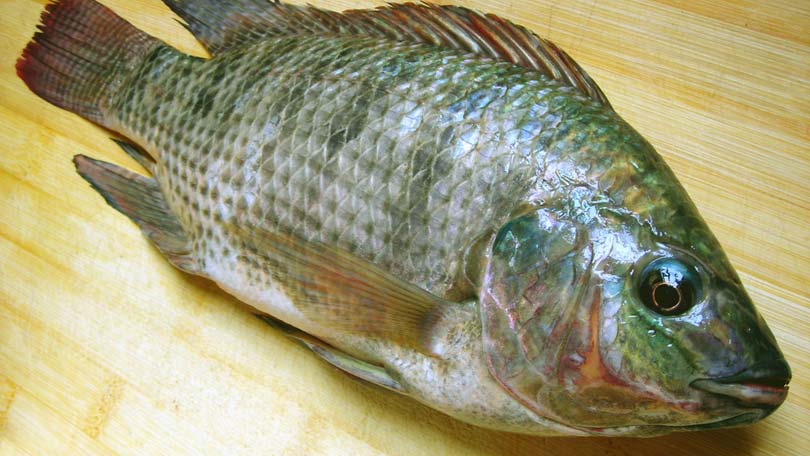
One of the hottest on-going arguments in the world of nutrition is whether fish-farming is a viable alternative to commercial fishing. And, it seems, much like Global Warming, there is little relevant information readily available. The majority of websites are biased one way or another, and neither side seems to provide any real hard proof that their way is better. So, for an answer, we have to go to pure science and research, from standard scientific sources. None of the sources I used for this research received any funding from the government, or from any source that could have a stake in this, either way.
It’s no secret that over-fishing is a major problem. Certain species, like Yellowfin, and some subspecies of Bluefin Tuna have been depleted to the point of being threatened and endangered. Yet, nothing has been done to realistically limit commercial fishing for them. A report issued by the PEW Environmental Group (view report) states that even though commercial tuna catches are regulated, the total amount of tuna sold commercially exceeds 141% over the allowable limit. How do we interpret this? Either some fish are being sold two or even three times (unlikely), or the quotas are not being enforced (most likely). Many scientists have estimated that at the current harvest rates, all species of tuna could collapse within 5 years (Global population trajectories of tunas and their relatives– PNAS 2011 108 (51) 20650-20655; National Academy of Sciences) , making them, in effect, a commercially extinct species. Newfoundland’s cod-fishing industry suffered a complete collapse in 1998, and has never recovered. Stocks of salmon are less than 30% of what they were just 10 years ago, on both the east and west coasts of the U.S. (Rebuilding Global Fisheries, Dr. Boris Worm, et al. Science 31 July 2009: Vol. 325 no. 5940 pp. 578-585 DOI: 10.1126/science.1173146). And we all know what happened with whales. Even though whaling has been outlawed, a few renegade countries (mainly Japan, Iceland, and Norway), and some Native American and other aboriginal peoples, will kill over 7400 whales this year (Report of the International Whaling Commission 2011, Chapter 5) .
Clearly, something needs to be done before it is too late. But what? Realistically, there are only two ways to address the problem. We either need to decrease the demand for fish, or increase the available amount. As the figures have shown, regulation has done little to help the situation. The problem with regulations are that they are only as good as your ability to enforce them. There is no world “Police Force” that has jurisdiction everywhere, and countries like Japan and Norway have demonstrated that there are those who will not honor the ‘Honor-System’. And even the countries that want to regulate fishing can only do it within their Territorial Waters, as a rule up to 200 miles from shore, less in some areas. International treaties would be required, and they are very difficult to get signed, and even harder to enforce. And it is unrealistic to think that the World-Wide fishing industry is going to voluntarily shut-down, or even slow down as long as they are making money.
So the other solution may be to increase stocks. Obviously, this isn’t going to happen in the wild as long as commercial fishing is still allowed. The other option is to commercially raise fish on fish farms. Fish farming (also known as Aquaculture) is actually a very ancient business, dating back as far as 6000 BC. China commercially raised carp as far back as 2500 AD, and the Romans raised fish in ponds, similar to modern catfish farms. So it’s not really a new idea. The only new part is the type of species we are trying to raise. Non-migratory fish like carp, catfish and tilapia are easy to raise. China developed a way to raise eels thousands of years ago, and many cultures have been raising shrimp, lobsters, crabs and shellfish for a long time. All these species really need is enough clean water, and food, and they do just fine. Pelagic and wide-ranging species like salmon, and tuna are more problematic. They have to be penned in the ocean, which is a harsh environment, and they are much more susceptible to diseases and parasites, namely, sea lice. However, just like any new technology, the bugs (sorry, I couldn’t resist the temptation….) are being worked out.
Some of the objections to fish-farming are:
- Farmed fish may escape and damage the ecosystem – this is due to confusion between farmed fish, which are just penned up wild fish, or their progeny, and GMO (Genetically Modified Organism) fish, which are both farmed, and released into the wild through stocking programs. As a rule, GMO fish don’t do well in the wild, with the exceptions being a few hybrids such as Tiger Trout (a cross between Rainbow and Brown Trout), and some bass hybrids. Albino Trout (A Rainbow trout genetically engineered to be white so anglers can see them), for instance, seldom survive one season in streams, are sterile, and fishermen hate them because the flesh is soft and tasteless. Almost all GMO fish are sterile females, meaning they cannot reproduce on their own. Genetic Engineering has had much more success with plants, than animals. So far, no species has become extinct, or even threatened because of GMO animals. Actually, all livestock is GMO. It just wasn’t done in a lab.
- The fish farms damage the environment – this is a legitimate concern, and some unscrupulous farms are guilty of damaging the ecosystem, just like some land farmers and ranchers do. This problem is easily solved by regulation and enforcement. It’s a new idea for us, and it may take a few years for the legislation to catch up, just like with computers, the internet, en vitro fertilizations, homosexuality, and this list goes on. The fact is, there are environmentally-friendly ways to operate fish farms, and most are doing it well. Good closed fish farms filter their water before allowing it to go back into the stream, pond or ocean, and they try not to over-crowd the fish. Open water farms use accepted and proven methods to limit the effect the farm has on the environment. Bad fish farms just deplete the environment, pack up, and start over somewhere else. But even in this case, the eco-system does recover in time.
- Fish Farms increase the spread of diseases like sea lice – this concern is over-rated. Sea lice are mostly dangerous to juvenile fish, which seldom hang around fish farms. Juvenile fish are trying to get back to the ocean. They can get sea lice from farmed fish while swimming by, but studies have show that the mortality rate is not much more than what they face anyway (fish have a high mortality in nature, which is why they lay thousands of eggs at a time…). Most antibiotics have been replaced by vaccines in farmed fish, which are much safer and more effective. Also, most pens are now using copper-alloy wire, which is anti-biotic in and of itself, corrosion-resistant, and much safer for both the fish, and the environment.
- Farmed fish are not as nutritious as wild fish – this one is pure hocum. Farmed fish are nutritionally identical to their wild counterparts, if they are the same species, and come from the same water. Farmed fish may have a slightly higher fat content (they get less exercise by not having to escape from predators….), but still far, far below what even extra-lean beef, chicken and pork have. GMO fish can be a little different, but they are seldom farmed, because they are so fragile, especially when young. GMO fish, especially the new strain of Atlantic salmon (called the AquaAdvantage Salmon), have been exhaustingly studied and pronounced perfectly safe to eat by the FDA, and most other regulatory organizations in the world. Most GMO fish come from hatcheries, or land-based fish farms. The truth of the matter is that to date, there has been no record of any deaths, or major health problems from the consumption of farmed, or GMO fish anywhere in the world. The Frankenfish myth is just that…a myth.
You can’t get something for nothing. If you will notice, a lot of the people that gripe about declining fish populations are the same ones complaining about fish farms and GMOs. A study is often quoted by detractors (Science 9 January 2004: Vol. 303 no. 5655 pp. 226-229 DOI: 10.1126/science.109144- Global Assessment of Organic Contaminants in Farmed SalmonRonald A. Hites, Jeffery A. Foran, David O. Carpenter, M. Coreen Hamilton, Barbara A. Knuth, Steven J. Schwager) purporting to show that farmed salmon have higher levels of PCBs and other contaminants in them, but the FDA and others found that the levels were still far below the safety-issue level, and the EPA guidelines are issued for all salmon, not just farmed. They also ignore the fact that wild fish contain very high levels of mercury, and other contaminants, and commercial fishing really does destroy environments. Nets often tear up fragile reef systems, the ships engines dump pollutants into the water, and they destroy thousands of other unwanted species through collateral damage, including some whale and dolphin species.
Private industry has risen to the challenge of dwindling fish supplies, and they are doing a very good job. At present, almost 50% of all fish and seafood sold in stores is farm-raised. That means more of those fish in the wild may survive to breed for another year. So go ahead and enjoy a nice farm-raised salmon steak. It won’t hurt you, and the worlds oceanic ecosystems will be better for it.





